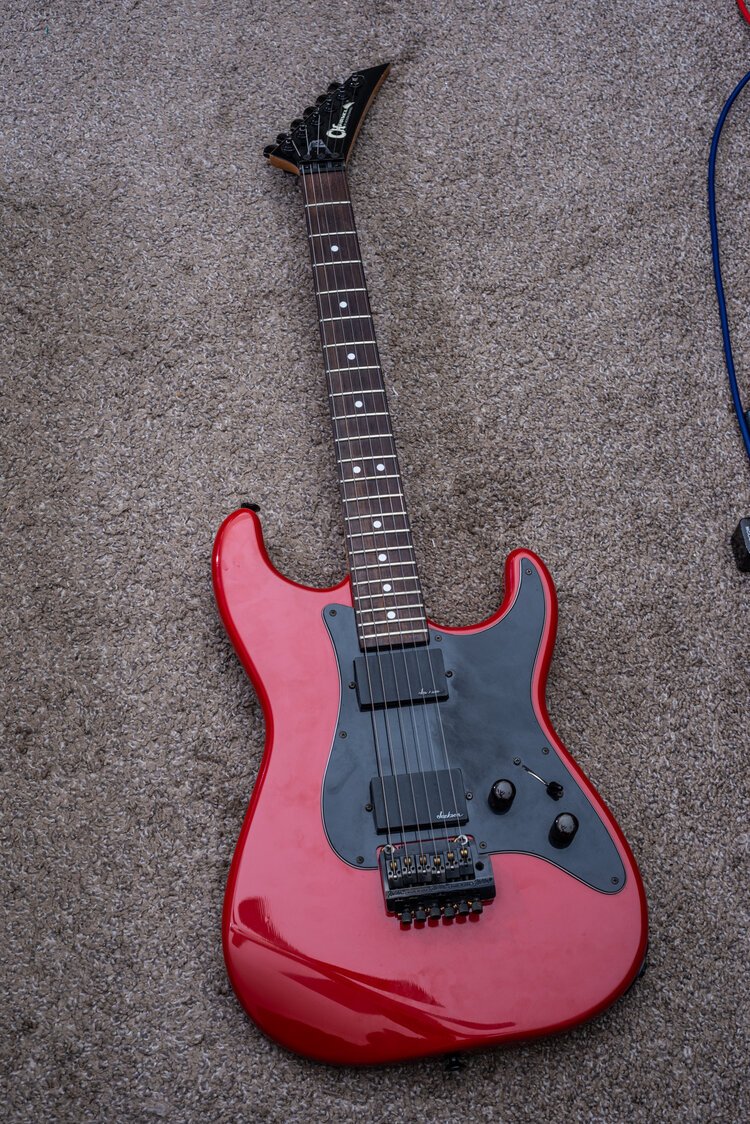This will surprise a lot of people, but growing up I was a really big Bangles fan - even before I played guitar. I enjoyed their musical style, and I appreciated the melodies and guitar riffs, largely played by Vicki Peterson. She was a Carvin endorser during this time and could be seen playing DC125’s and similar models all the time - usually with the “V” headstock but occasionally with the pointy shape too. This band is the same reason I ended up with the Jetglo Rickenbacker 360 too, especially early on in my guitar learning experience.
So I’ve finally gotten a proper, 80s Carvin DC! These are tough to find, and in hindsight looking at the catalogs and pricing I can’t believe these weren’t selling like crazy, especially now that I have one to play. The quality, fit, finish, and hardware is impeccable. Mine is equipped with gold hardware, including an gold original floyd rose (not so common back then!) and Carvin brand tuners which feel very high quality. The pickup is an M22SD, which is a high output mid-heavy pickup perfect for rock and metal, plus a coil tap. Even the mounting screws of the pickup are gold - a nice touch - along with the input jack plate too.
You can also differentiate this 1989 model from 1988 models by looking at the strap buttons, mounted at the tip of the upper horn. 1988 models have the upper horn strap button is mounted on the underside, towards the neck instead of on the tip. It’s also noteworthy that during this time, these could be ordered with flat mount Kahler 2300 tremolos (as used on ‘86 Charvels and plenty of others), tune-o-matic bridges, or Original Floyd Rose bridges.










